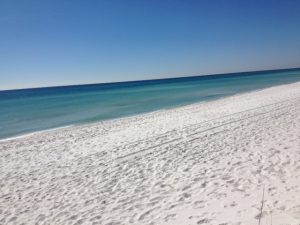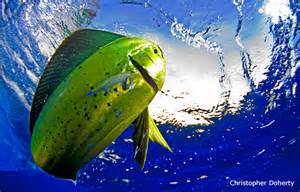Last week in Lesson 4 we began looking at how the dissolving behavior of the polar molecule we call water causes what we call salinity – or the “saltiness” of the sea – (see Lesson 4 for a better explanation). At the end we set up an experiment to observe the effects of freshwater and saltwater and a plant cell – a grape. How did it go?

Photo: Rick O’Connor
What should have happened was that the grape in freshwater should have enlarged – swelled some.
The grape is seawater should have shriveled.
The reason for this is osmosis – the movement of materials (in this case water) from one side of a pervious material (like a cell wall) to the other (Lesson 4). The material always goes from high concentration to low. In freshwater, the water concentration is higher outside of the cell – so water moves in – causing the grape to swell. In saltwater, the concentration is higher inside the cell – so water moves out – causing the grape to shrivel.
Does this happen to fish and other creatures living in water?
Yes…
So, they must be able to deal with this.
Those that live in freshwater are absorbing water from the environment. How would they get rid of it before their cells swell? They excrete the water and they (for the most part) don’t drink. Their excretory system (kidneys at more) are designed to handle this problem.

Photo: Christopher Doherty, National Wildlife Federation
For those living in seawater, they are losing water to the environment – they are dehydrating. How would they gain water before their cells shrivel? The opposite. They excrete very little and drink a lot. BUT THERE IS A TRICK HERE. If I drink seawater, I now have seawater inside AND outside my body and I will dehydrate faster. I can’t drink seawater, not good. Sooooooo….
Well, they will drink seawater, but they must have some mechanism for excreting the salt out of the water before they swallow it. Many fish can do this with their gills. Seabirds have a special tube on their upper beak. Turtles have special glands in their eyes (they appear to “cry” when on land). Everyone has to have something, and their excretory system is designed to handle this.

Photo: Florida Sea Grant.
And there lies another problem.
If you take an animal who has adapted to living in seawater (where they are losing water from their cells) and place them into freshwater – they have a hard time getting rid of all of the new water and their cells will swell – the animal will eventually die.
Keep in mind this is true for plants also.
What about those creatures that can be found in fresh and saltwater?
Their excretory system is designed so that they can handle either water coming in or going out. Wah-La.
Kind of cool.
ACTIVITY
– If they are not TOO nasty, try moving the shriveled grape from the seawater in last weeks experiment to the freshwater jar, and the freshwater grape to the saltwater jar. What do you think will happen? LET’S SEE NEXT WEEK.
So, you see the polarity of the Magic Molecule (Lesson 1) causes the dissolving of elements from compounds (Lesson 4) to make the water saltier as it flows across the landscape (Lesson 2 and 3) heading to the sea. As it increases salinity (Lesson 4) and changes the landscape (Lesson 3) you will notice a change in the plants and animals that live there.
But you also must understand that creatures need the Magic Molecule for more than just a habitat to live in. Many plants and animals do not LIVE in water – look at the ones in your yard from the other Lessons we have been doing. BUT we know they all need to drink. We have been experiencing a drought recently, and animals have been moving all over the place trying to find it – and when it rains, they will be all over the place trying to get what they can.

Do you know how much water you should drink each day?
Internet sites vary on the exact amount, but it is interesting to see how much you really should drink. Most of us do not drink enough.
The reason all creatures must drink water is complex, but the bottom line is…
– 90% of your cells (and your body) is water – and you lose it during the day.
– Water is polar and can help obtain and transport vitamins and minerals to where it is needed.
– It can help remove toxins produced during the day, or from food you eat, and help get rid of them (going to the bathroom).
Again, it is complicated – there are MANY more reasons why you need water – why ALL creatures need water.
ACTIVITY
– Find at least 10 sources on the internet that explain how much water you should drink each day. Some will list it by how much you weigh (makes sense) – so use your weight for those where you can. Average them. What do you get? How many ounces a day? Are you drinking enough? Have a glass of water 😊
– Make sure your dog or cat’s water bowl is full – go ahead and fill that if you need to.
– If you have plants in flowerpots, add some water and watch what happens during the day. How do you think plants drink water? How much do they need each day? Remember, they are alive just like we are.
– Spend some time making sure all the plants and animals in your yard have some water today. It is supposed to rain in Pensacola tomorrow. Watch what happens to the plants and animals in your yard after a rain. Pretty cool.
AS ALWAYS
HAVE FUN OUTSIDE AND STAY SAFE
 0
0
